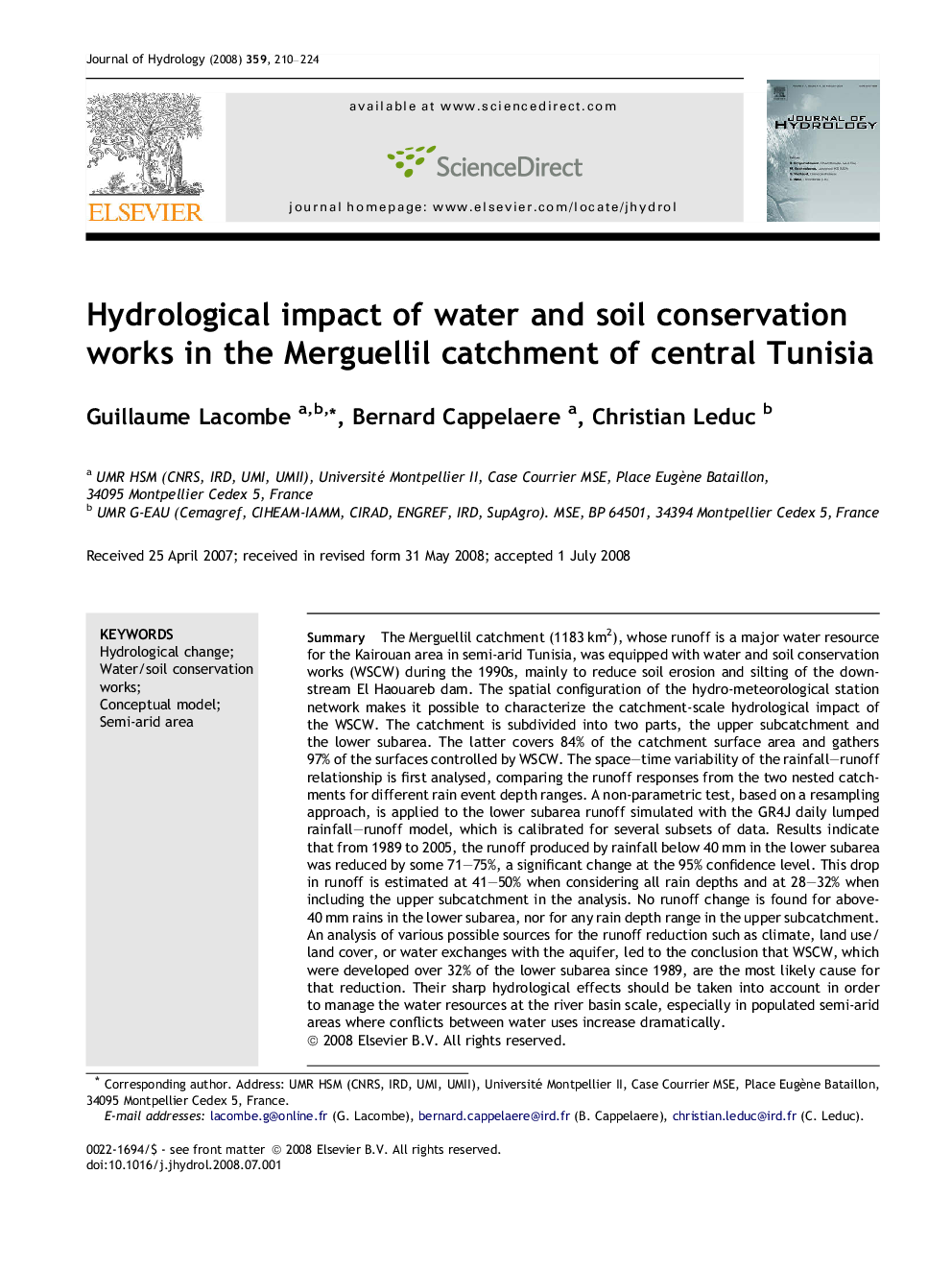| کد مقاله | کد نشریه | سال انتشار | مقاله انگلیسی | نسخه تمام متن |
|---|---|---|---|---|
| 4579259 | 1630099 | 2008 | 15 صفحه PDF | دانلود رایگان |

SummaryThe Merguellil catchment (1183 km2), whose runoff is a major water resource for the Kairouan area in semi-arid Tunisia, was equipped with water and soil conservation works (WSCW) during the 1990s, mainly to reduce soil erosion and silting of the downstream El Haouareb dam. The spatial configuration of the hydro-meteorological station network makes it possible to characterize the catchment-scale hydrological impact of the WSCW. The catchment is subdivided into two parts, the upper subcatchment and the lower subarea. The latter covers 84% of the catchment surface area and gathers 97% of the surfaces controlled by WSCW. The space–time variability of the rainfall–runoff relationship is first analysed, comparing the runoff responses from the two nested catchments for different rain event depth ranges. A non-parametric test, based on a resampling approach, is applied to the lower subarea runoff simulated with the GR4J daily lumped rainfall–runoff model, which is calibrated for several subsets of data. Results indicate that from 1989 to 2005, the runoff produced by rainfall below 40 mm in the lower subarea was reduced by some 71–75%, a significant change at the 95% confidence level. This drop in runoff is estimated at 41–50% when considering all rain depths and at 28–32% when including the upper subcatchment in the analysis. No runoff change is found for above-40 mm rains in the lower subarea, nor for any rain depth range in the upper subcatchment. An analysis of various possible sources for the runoff reduction such as climate, land use/land cover, or water exchanges with the aquifer, led to the conclusion that WSCW, which were developed over 32% of the lower subarea since 1989, are the most likely cause for that reduction. Their sharp hydrological effects should be taken into account in order to manage the water resources at the river basin scale, especially in populated semi-arid areas where conflicts between water uses increase dramatically.
Journal: Journal of Hydrology - Volume 359, Issues 3–4, 30 September 2008, Pages 210–224